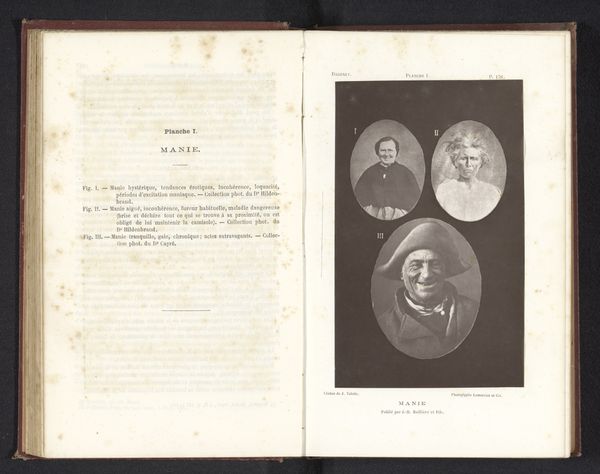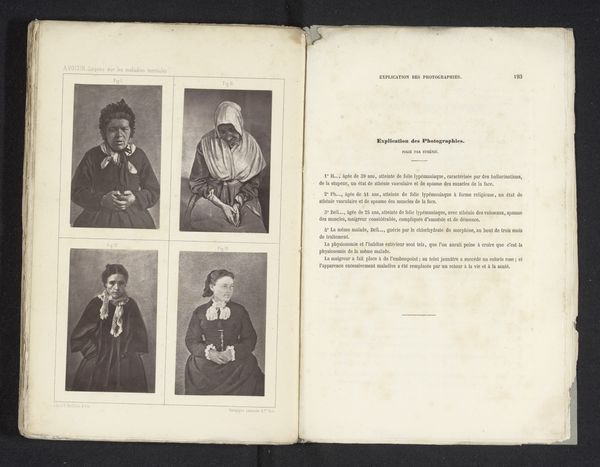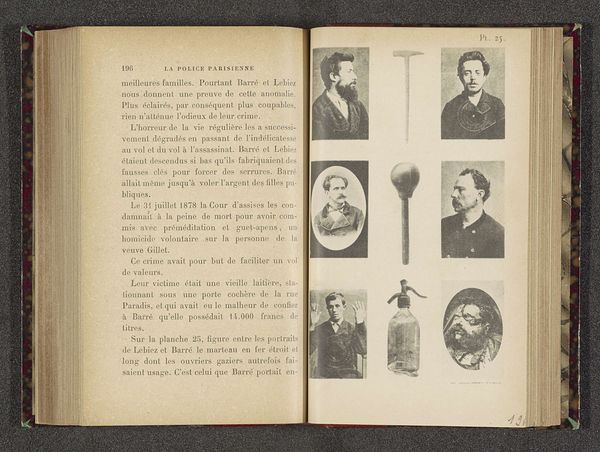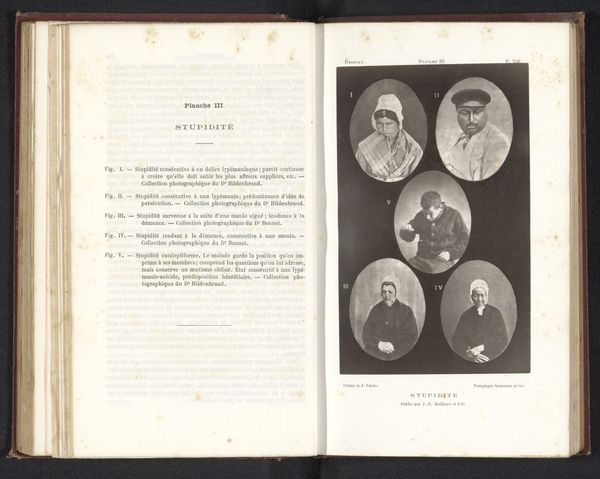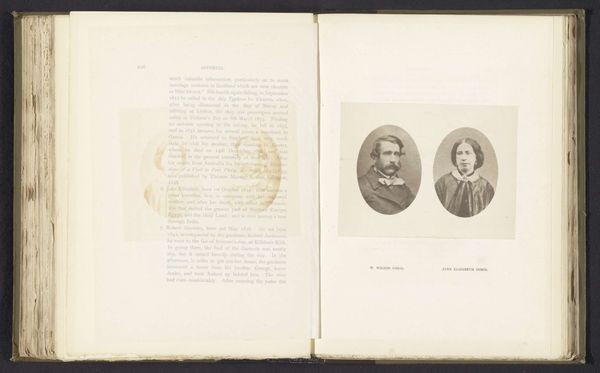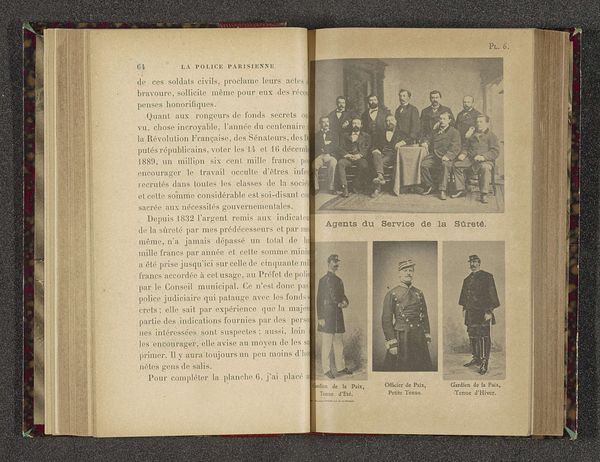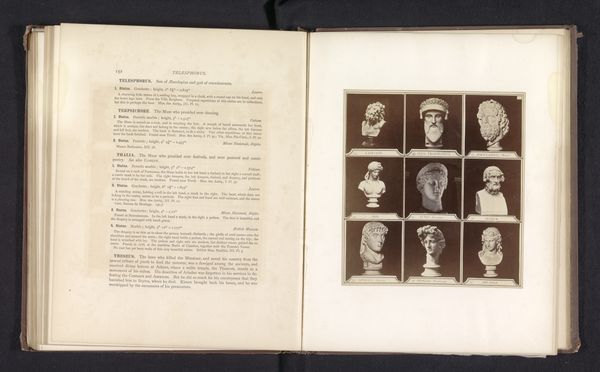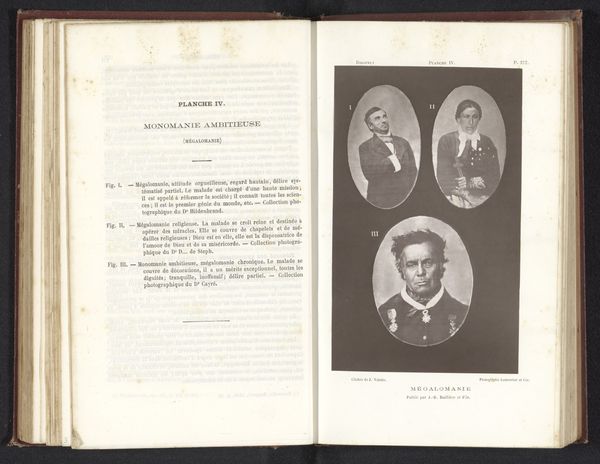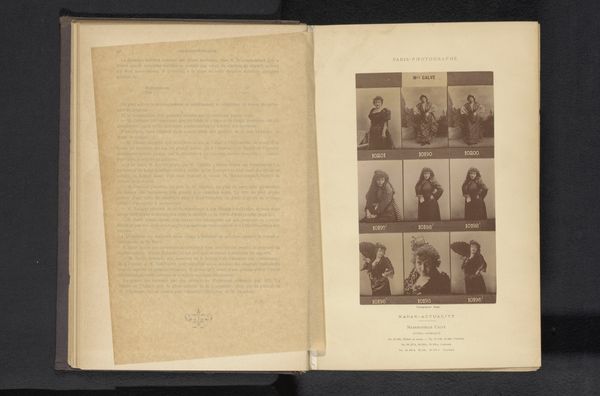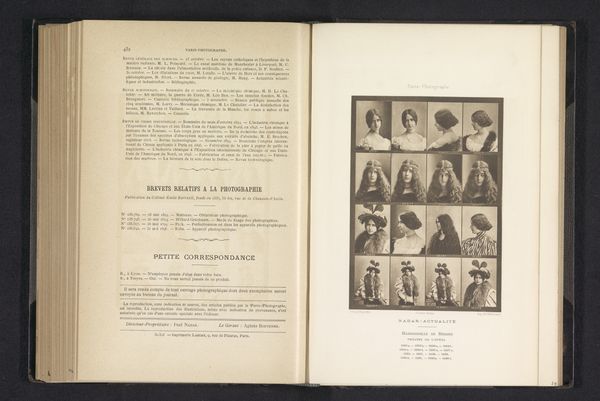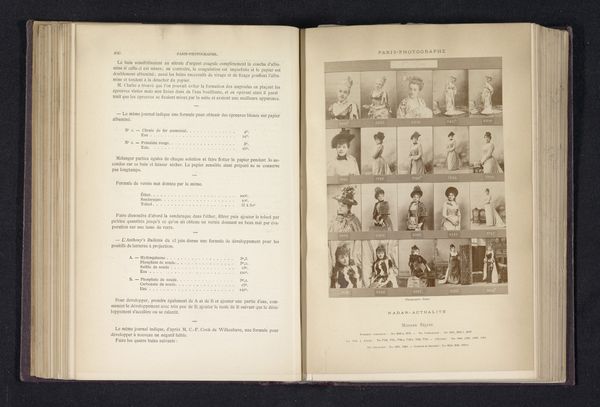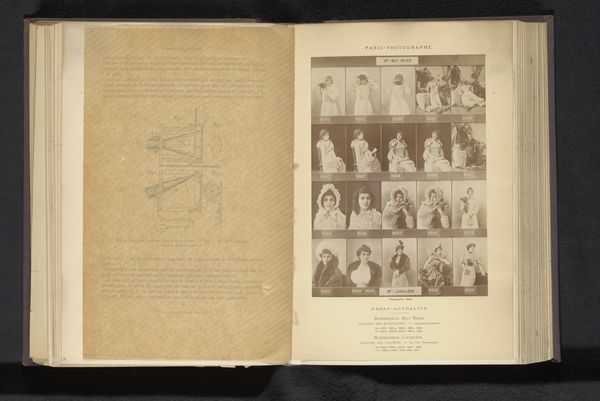
photography
#
photography
#
academic-art
Dimensions: height 166 mm, width 102 mm
Copyright: Rijks Museum: Open Domain
Curator: Looking at this open book, one is confronted by a series of five portraits taken before 1876. These images, captured through photography, bear the title "Five Portraits of People Suffering from Cretinism," attributed to J. Valette. What strikes you initially about them? Editor: It's the sheer intensity of the gazes that holds me. Even in these aged photographs, the subjects' expressions are deeply affecting, holding both a sadness and a kind of haunting vulnerability. It makes me think of medical studies from this era and questions around visual representation. Curator: Absolutely. These images fall within the genre of academic art. Note the clinical, almost scientific approach. Each portrait isolates the individual, presenting them for observation, diagnosis. The photograph freezes the face into an example, a specimen if you will. How do you think the visual language used shapes perception and cultural memory regarding these subjects? Editor: That’s a powerful observation, framing the subjects within a pre-existing scientific paradigm. There’s a stark dehumanization present here. The aesthetic choices contribute heavily to cultural memory by presenting individuals solely through the lens of their medical conditions. Curator: Exactly. This underscores how historical frameworks greatly shape visual representations. "Cretinism," as it was then understood, came loaded with social stigmas that seep into these photographs. By dissecting that context, what new understandings arise about institutional and cultural biases? Editor: Understanding this imagery, it invites a powerful reflection on medical ethics and the power of representation, both historically and in our present moment. How have medical biases shifted or endured over time, and how can we, through our art, encourage discussions on dignity and inclusivity? Curator: This visual artifact is a tool, isn't it? It helps to reevaluate earlier presumptions. I see a glimpse into how symbols within imagery can impact public sentiment on specific conditions or groups of people. Editor: I leave now questioning art's function in advocating for inclusivity—and the crucial function museums have as custodians of visual knowledge, tasked with ethical responsibility.
Comments
No comments
Be the first to comment and join the conversation on the ultimate creative platform.
